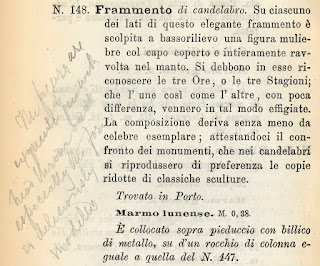As the location of the Continental Congress and the nation’s first capital, 18th-century Philadelphia hosted many trend-setters, who knew that what they wore was as important as what they said. This was true whether representatives dressed in clothing made of luxurious fabrics imported from overseas, or in patriotic homespun, made entirely from domestically-produced materials. Benjamin Franklin can perhaps be considered Philadelphia’s “first fashionista.” Several of his portraits, which show him in his rustic mode – in spectacles and fur hat, and without a wig – can be seen in the exhibition.
Until the late 19th century Philadelphia was the country’s most cosmopolitan city. Not only was it the country’s most active port, but it also supported diverse cultures and communities whose personal styles helped shape larger fashion trends. The city was home to the largest population of free African Americans, rising classes of skilled and unskilled tradesmen, and generations of Quakers. Cut paper silhouettes, daguerreotype portraits, and lithographic renderings of these and other groups are on display.
Philadelphia’s central place as an important trend-setter was nowhere more evident than on Chestnut Street, renowned as one of the most fashionable retail corridors in the world. Casual travelers and style mavens alike remarked on the thoroughfare’s grandness, elegance, and exclusivity, likening it to the shopping districts of Paris, London, and Milan. People flocked there to “promenade” – to see and be seen – as illustrated in the many scenes of Chestnut Street in the show. One observer at the time noted the “thronging of well-dressed people, and the unexpected splendour of the shops – large stores shewing [sic] a long vista of elegant counters, shelving, and glass-cases. . . stocked with the most costly articles of luxury.”
The city was not merely a consumer of the latest and most fashionable goods, but an important producer of fashion as well: Philadelphia’s industrial might rivaled the factories in New England. Countless numbers of weavers, spinners, dyers, and tailors who settled in Philadelphia brought their skills with them when they immigrated from Europe. The water-powered mills of Manayunk wove some of the finest textiles. The city’s merchant tailors – some of whose innovating patterning systems are included in the exhibition – helped men dress for success; and French milliners outfitted upper-class women in the finest dresses and hats. The city’s many tanneries, set along the banks of the Schuylkill River, processed hundreds of thousands of pounds of leather a year, producing raw material that would make everything from the most durable of coach bags to the most luxurious kid leather shoes.
The Frankford and Kensington sections of the city supported innumerable light industries that also contributed to the fashion trades. Wireworks, iron processors, light metal shops, and carvers made constituent parts for fashion items as diverse as hoop skirts and umbrellas. John B. Stetson’s landmark factory was situated in the heart of Philadelphia, and at is peak in the early 20th century was producing some 2 million hats per year. Visitors to the exhibition are able to see a Stetson top hat along with its custom-made leather case.
Philadelphia was not just an important industrial hub, but a center for printing and publishing as well. As such, it was the place where several important fashion magazines, such as Godey’s Lady’s Book, were launched. These publications disseminated the latest trends far and wide and helped spark the consumer revolution. Examples on display show how these magazines, in their drive to produce color fashion plates more cost-effectively, also spurred important innovations in printing technologies.
In addition to the city’s taste-makers and manufacturers Philadelphia’s retailers also played an important role in shaping the American fashion industry by bringing the latest and most stylish goods to market. Retail visionaries like John Wanamaker, Justus Strawbridge, and Isaac Clothier remain well-known names, even though their flagship stores closed years ago. One of the highlights of the exhibition is a wool pinstripe suit, on loan from Library Company member Walton C. Burwell, whose father purchased it from Wanamaker’s in the 1930s.
All of these stories, and more, are told in “Fashioning Philadelphia: The Style of the City, 1720-1940,” which is on display until March 4, 2016, and can be see for free during the Library Company’s operating hours.







































